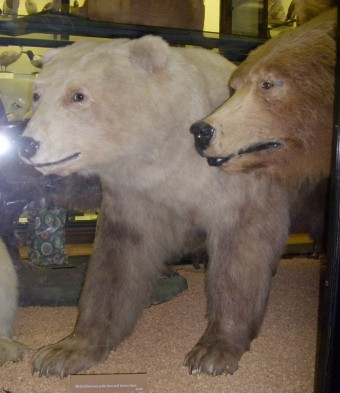There are no crossover croca-horse fossils."
Of course not, and nobody ever said there is.
But we are dealing here with a precise scientific definition of the word "species" -- what is it?
For example, Polar Bears and Brown Bears were classified scientifically as separate "genera" but recently got changed to just different "species" of the same genus.
One reason: they do occasionally mate and produce viable hybrid offspring, sometimes called a "groler-bear".
- "The polar bear was previously considered to be in its own genus, Thalarctos.[14]
However, evidence of hybrids between polar bears and brown bears, and of the recent evolutionary divergence of the two species, does not support the establishment of this separate genus, and the accepted scientific name is now therefore Ursus maritimus....
"The bear family, Ursidae, is believed to have split off from other carnivorans about 38 million years ago.
The Ursinae subfamily originated approximately 4.2 million years ago.
The oldest known polar bear fossil is a 130,000 to 110,000-year-old jaw bone, found on Prince Charles Foreland in 2004.[16]
Fossils show that between ten to twenty thousand years ago, the polar bear's molar teeth changed significantly from those of the brown bear.
Polar bears are thought to have diverged from a population of brown bears that became isolated during a period of glaciation in the Pleistocene.[17]
"The evidence from DNA analysis is more complex.
The mitochondrial DNA (mtDNA) of the polar bear diverged from the brown bear, Ursus arctos, roughly 150,000 years ago..."
Point is: most of these changes take place over long periods of time, generation by generation, and so it is not possible to pinpoint precisely when one sub-species has changed just enough to be considered a new species, or one species changed just enough to be called a new genus, etc.
Groler-bear: